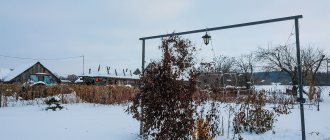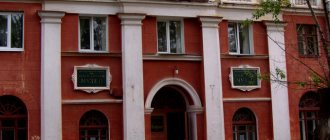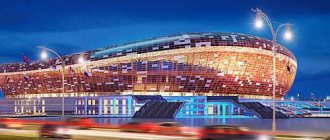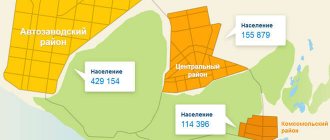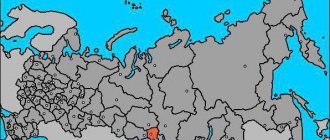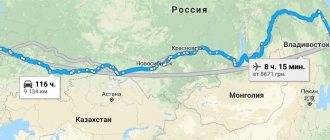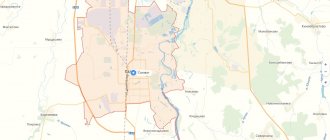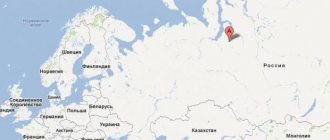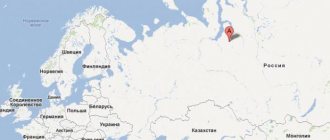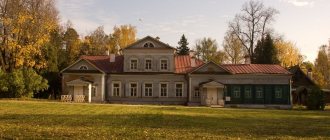The largest region in the Central part of Russia is the Nizhny Novgorod region. Its area is about 80 km2. The satellite map of the Nizhny Novgorod region shows that it is elongated in the meridional direction from north to south.
The region's borders include the following areas:
- Kostroma;
- Kirovskaya;
- Vladimirskaya;
- Ryazan;
- Ivanovskaya.
The eastern borders are limited by Chuvashia and the Mari El Republic.
A map of the Nizhny Novgorod region by district gives an idea of all the objects. For example, you can consider the hydrography of the region, which is represented by the country’s largest rivers, the Volga and Oka. In total, more than 9,000 rivers and streams flow through the region, including the following:
- Sura;
- Uzola;
- Drunk;
- Kudma;
- Linda;
- Tesha;
- Vetluga.
If you use a map of the Nizhny Novgorod region with diagrams and move along it to the western borders of the region, you can find the place where Lake Pyrskoe is located - the largest in the region. And if you zoom in on the map, the streets and houses of cities, administrative facilities, as well as roads and railways will become accessible.
General information about the Nizhny Novgorod region
The Nizhny Novgorod region occupies about 0.45% of the territory of Russia, its area is 76.9 thousand sq. km
The Nizhny Novgorod region includes 52 municipalities, including 9 city districts and 43 districts. The total population of all regional cities, towns and villages is 3 million 291 thousand people.
The administrative center of the region is Nizhny Novgorod, whose population reaches 1 million 260 thousand people.
The predominant language is Russian, but in some areas (Krasnooktyabrsky, Sergachsky) the Tatar and Mari languages are also widespread.
The legislative branch is represented in the region by the Legislative Assembly of the Nizhny Novgorod Region, and the executive branch is represented by the Government headed by the Governor of the Nizhny Novgorod Region.
Transport links, roads and routes
The Nizhny Novgorod region has a well-developed transport infrastructure. In the administrative center there are: a large railway junction, a cargo and passenger river port, and an international airport. The Nizhny Novgorod railway section is part of the new Trans-Siberian Railway.
The following highways of federal and republican significance pass through the region: M7, P158, P125, P152, P159. The M7 Volga highway should in the future become part of a new route connecting Asia with Europe. It is clearly visible on the satellite map of the Nizhny Novgorod region.
Geography and climate
The Nizhny Novgorod region is located in the center of the European part of the country. Its borders from northeast to southwest along the Russian Plain stretch for 400 kilometers.
The region is located on the banks of the largest river in Europe - the Volga. The region's land borders are adjacent to such regions as Ivanovo, Vladimir, Kirov, Ryazan and Kostroma, as well as the republics of Mordovia, Chuvashia and Mari-El.
Geographically, the region is located in several geographical zones - from meadow steppes to southern taiga. Naturally, this is reflected in the flora, fauna of the region and the prevailing climate here.
The region is dominated by a temperate continental climate with distinct seasons. The difference in temperatures in the north and south of the region is on average 1-2°C. Traditionally, there are the Trans-Volga, forested zone, and the Right Bank, where plains predominate, and the climate here is warmer.
The optimal time to visit the Nizhny Novgorod region is from July to mid-August, when warm summer weather sets in in the region, and from the second half of December to the end of January - during this period, moderately frosty, comfortable winter weather reigns in the region.
The relief in the Nizhny Novgorod region is flat, but on the right bank of the Volga there are also hills - the Peremilovsky, Dyatlovy, Fadeevy mountains. In general, one of the main resources in the region is water resources. There are about 9 thousand rivers, rivulets and streams. The largest water artery is the Volga.
On the spit of the Volga and its right tributary Oka is located the “capital” of the Nizhny Novgorod province - the city of Nizhny Novgorod. Among the rivers and lakes of the region, many are natural monuments, for example, Lake Svetloyar or the Sundovik River.
Parks, entertainment and more
Ostrich farm in Gremyachevo
Address: Gremyachevo village, st. Lugovaya, 2A Telephone: Opening hours: Mon-Fri 8:00-17:00, break 12:00-13:00; Sat, Sun 8:00-16:00 Cost: 50 - 70 rubles How to get there: from Nizhny Novgorod along the highway 32K-0125 to the village. Mukhtolovo, then after 8 km turn left and get to Gremyachevo, 2 hours 45 minutes, 160 km, by bus 4 hours 17 minutes.
The farm is home to African ostriches, Cameroonian goats, turkeys and chickens of various breeds.
The workers will talk about the history of the creation of the farm, the rules of caring for animals that can be fed.
You can also try an ostrich egg omelette and purchase crafts made from the feathers of these birds.
Gorky Sea
The Gorky Reservoir, popularly proudly called the Gorky Sea, is a favorite vacation spot for residents of Nizhny Novgorod and neighboring regions. People come here with children or cheerful, noisy groups to relax for the weekend or spend a whole vacation here. A lot of rest houses, sanatoriums, camps, and campsites on the shores of the Gorky Sea make a vacation in a picturesque place in the Nizhny Novgorod region as comfortable as possible.
The history of the appearance of the Gorky Reservoir is as follows. Back in the 50s of the 20th century, the Volga was blocked by the dam of the Gorky hydroelectric power station. Thus, a kind of “backwater” appeared with an area of about 160 hectares.
If the upper part of the Gorky Sea, located on the territory of the Ivanovo region, with its endless expanses of water and deserted islands, is most suitable for sailing regattas and boat trips, then the lower part of the reservoir in the Nizhny Novgorod region is a paradise for fishermen. Almost no one is left without a catch. The most common “sea” inhabitants are perch, pike perch, scavenger, and sorozhka.
The main beaches and recreation centers are located on the left bank of the Gorky Sea, while the right bank is not very suitable for recreation, as it is very steep and steep. There are a lot of options for recreation - from elite “vip” boarding houses to affordable student camps and recreation centers. Some beaches are loved by regulars of the “grief-sea” as places for wild relaxation.
Among the traditional marine entertainments, you can find rides on catamarans and boats along the coast. Immediately behind the sandy strip of beaches there are dense forests with berries and mushrooms. So, when coming to the Gorky Sea in July-August, you can stock up not only with positive emotions, but also with a portion of vitamins.
Churches, cathedrals and temples
Iversky Convent in Vyksa
Address: Vyksa, st. Krasnoflotskaya, 58 Phone: +7 83177 3‑22-41, +7 920 299‑61-03 Website: vm1864.ru Opening hours: Mon-Sun 9:00-18:00
The site for the future monastery was chosen by the Monk Barnabas - at the request of local merchants. According to legend, he stuck a branch into the ground deep in the forest. Nuns and the holy fool Dmitry Pivovarov soon settled in the monastery.
In 1927, they decided to blow up the monastery; the nuns who refused to leave the monastery died. After the church building was returned, it was reconstructed - a bell tower and a Trinity chapel were erected. The main shrine of the temple is the miraculous Iveron Icon of the Mother of God. It was kept by a watchman after the explosion.
Despite ongoing renovations, services are still taking place here.
Makaryevsky Monastery
Address: s. Makaryevo Phone: +7 83149 5‑91-69, +7 83149 5‑93-60 Website: makaryzhelt.cerkov.ru Opening hours: Mon-Sun 6:00-19:00 How to get there: from Nizhny Novgorod along highway 22K- 021 to s. Makaryevo, 1 h. 46 min., 90 km, by bus 2 h. 34 min., also can be reached by ferry from N. Novgorod
The parish was founded in the 15th century. Under Soviet rule, the building was closed; now most of the buildings are under reconstruction.
Here you can venerate the relics of St. Macarius, the founder of the monastery.
There is also an ancient cemetery on site where monks are buried since the 15th century.
St. Nicholas Church of Balakhna
Address: Balakhna, Revolution Avenue, 17 Phone: +7 83144 6‑15-39 Website: podpokrovom.ru Opening hours: Mon-Sun 7:00-19:00
The second oldest building in the region after the Nizhny Novgorod Kremlin.
The relics of Saint Paphnutius, who founded the Intercession Monastery, are kept here. Until 1929, the iconostasis was decorated with the miraculous Hodegetria icon; after the church was closed, it disappeared.
Oransky Mother of God Monastery
Address: s. Oranki, st. Pochtovaya, 2 Phone: +7 929 044‑60-05 Website: orankimon.rf Opening hours: daily, around the clock How to get there: from Nizhny Novgorod along the M-7 highway to the village. Oranki, 1 hour 43 minutes, 82 km
According to legend, local merchant Pyotr Andreevich saw the Mother of God in a dream, who told him to found a temple. He soon abandoned worldly life and built a church in three months.
The miraculous Oran Icon is kept here, which was saved during the 1917 revolution.
There is also a holy spring with a font on the territory.
Sights of the Nizhny Novgorod region
In the Nizhny Novgorod region there are natural monuments, architectural monuments, famous estates, and embodiments of the highest engineering thought - everything that can be found in the world treasury.
Naturally, the leader in the number of cultural heritage sites and simply interesting cultural monuments from different times is Nizhny Novgorod. Its main attractions are the Kremlin, the Volga slope, the Rukavishnikov estate and many others, however, the region does not lag behind its center.
The Gorodetsky and Lyskovsky districts of the Nizhny Novgorod region are famous for their preserved original culture, wooden architecture and museums of customs and traditions of the peoples of the Volga region. Bolsheboldinsky district is the patrimony of the Pushkin family, glorified by the famous Russian writer Alexander Seregeevich Pushkin in his works.
There are natural monuments in almost all districts of the Nizhny Novgorod region. The most famous are the Kerzhensky Nature Reserve, the Ichalkovsky Nature Reserve, lakes Svetloyar and Vadskoye, the Sundovik River and others. The virgin nature, the abundance of animals, birds and fish amazes the imagination.
The special pride of the Nizhny Novgorod region are monasteries, temples and holy places. There is no such person in the Orthodox world who has not heard about the village of Diveevo - the estate of St. Seraphim of Sarov - or the Makaryevsky, Blagoveshchensky or Pechersky monasteries. In terms of the number of pilgrims, these places are in no way inferior even to Israeli Christian shrines.
There are also quite rare industrial and engineering structures in the Nizhny Novgorod region that have become architectural monuments. Thus, in the Dzerzhinsk area there is a hyperboloid openwork tower - a steel work of art by engineer Shukhov. The buildings he built stand in Vyksa and also represent a certain architectural value for the world community. This is a workshop with sail-shaped steel floors and the world's first hyperbolic tower.
There are dozens of excursion routes throughout the Nizhny Novgorod region, and here are the most popular of them:
Historical sites and museums
Museum and tourist center in Semenov
Address: Semenov, st. Chkalova, 15B Phone: +7 920 252‑72-00, +7 83162 5‑61-41 Website: semenov-museum.ru Opening hours: Mon-Fri 9:00-18:00; Sat 9:00-13:00; Sun 10:00-16:00 Cost: 100-450 rubles
The museum is built in the form of a painted tower. Here are collections of objects painted with Khokhloma - dishes, toys and even furniture.
In the “Royal Room” the walls and a three-meter throne are decorated, and there is a set of carved figures - 240 objects in total.
The complex's employees conduct master classes on making and painting toys.
Vetluzhsky Museum of Local Lore
Address: Vetluga, st. Lenina, 1A Phone: +7 83150 2‑25-60 Website: vmuzeum.nnov.muzkult.ru Opening hours: Mon-Fri 8:00-17:00; Sun 8:00-14:00 Cost: 14-35 rubles
The museum occupies an old merchant's house from the 19th century.
On the ground floor, the natural world of the Vetluzh region is presented - stuffed animals and herbariums. The second floor is dedicated to the history of the region and the city. There are household and art objects from estates and peasant houses, a collection of weapons and cannons from the times of Peter the Great.
You can also see a collection of handwritten and early printed books.
The next room is dedicated to the history of persecution of Orthodox Christians in Soviet times.
Mining Museum in Peshelani
Address: s. Peshelan Phone: +7 83147 5‑52-81 Website: pgz-tour.ru/obekty/1 Opening hours: Mon-Sun 8:00-17:00 Cost: 400 rubles How to get there: from Nizhny Novgorod along the P-158 highway to s. Peshelan 2 hours 5 minutes, 130 km, by bus 1 hour 32 minutes.
The museum is located in a mined mine at a depth of 65 meters. The exhibition includes old stone carts and rock mining tools. In addition, the site of an ancient man was reconstructed here and a psychological camp was equipped.
You can spend time with health benefits in a shungite room - this rock is believed to have healing properties.
At the very bottom there is a so-called panic room with various frightening mannequins.
Lace Museum in Balakhna
Address: Balakhna, st. Karla Marksa, 4 Phone: +7 83144 6‑16-62, +7 83144 6‑28-40 Website: bmihk.ru Opening hours: Mon, Tue, Wed, Thu, Fri, Sun 9:00-17:00 Cost : 100-340 rubles
The main exhibits of the museum are samples of lace from the 19th century.
There are creations for everyday needs: clothes, scarves, bed linen and towels. The collection also contains lace icons from the 17th century and works from the Soviet period.
A design invented by local craftsmen—the “robe rose”—adorned the wedding dress of Queen Victoria of England.
Voznesensky Matryoshka Museum
Address: Voznesenskoye town, st. Sovetskaya, 14 Phone: +7 83178 6‑11-62, +7 83178 6‑11-16 Website: voznmuseum.rfnn.ru Opening hours: Mon-Thu 8:00-17:00; Fri 8:00-16:00; Sat 9:00-13:00 Cost: 30-60 rubles
A tour of the museum begins with the history of toy production; there is even a production model carved out of wood and a real tool from the 18th century.
There is also a prototype of the matryoshka doll - the Chinese toy Futurama. The figures are of different heights, some are almost two meters tall and some are tiny, the smallest is only 5 mm.
In addition, the museum has exhibitions on the following topics: “Russian hut of the 19th century”, “Voznesensky and Izhevsk factories of the Batashev brothers”, “Forties - fatal”, “Factory Polkh-Maidan painting”, “Archaeology”, “Clothing of the 19th-20th centuries "," Lapot-bast."
After the tour you can attend master classes.
Museum of Speed in Chkalovsk
Address: Chkalovsk, st. Chkalova, 4 Phone: 8-(83160)-4-20-51 Website: https://russian wings.rf/musey_skorostey Opening hours: Mon-Sun 9:00-17:00 Cost: 50-200 rubles
The first exhibition of the museum is dedicated to barge haulers, who were hired by shipbuilders here. The following describes the appearance of the first steam ships and ekranoplanes.
Most of the exhibition is dedicated to Rostislav Alekseev, the first person who managed to construct flying ships. In a separate room there are items from his office, first developments and awards.
The museum's collection also contains household items of merchants and peasants from the 18th to 20th centuries.
Semenovsky Historical and Art Museum
Address: Semenov, st. Vaneeva, 5 Phone: +7 83162 5‑19-30, +7 83162 5‑61-4 Website: semenov-museum.ru Opening hours: Mon-Fri 9:00-18:00; Sat 9:00-13:00; Sun 10:00-16:00 Cost: 25-50 rubles
Most of the collection was collected by Georgy Matvey, a woodcarver.
Part of the exhibition represents the life of the Old Believers; there is a model of their monastery. The collections also contain a collection of various spoons and nesting dolls. A separate room is dedicated to the works of writers Boris Kornilov and Sergei Afonin.
Pashkov Estate
Address: s. Vetoshkino How to get there: from Nizhny Novgorod along the M-7 highway to the village. Vetoshkino, 2 hours 47 minutes, 170 km
The estate was built over 40 years, from 1826 to 1866. Previously, there were many premises on the territory: a residential building, an outbuilding, outbuildings and a stud farm.
Now almost everything has been destroyed, but parts of the decoration can still be seen on the ruins of the house, and an exhibition of Gzhel art has been placed in the outbuilding.
Levashov estate in Galibikhe
Address: s. Galibikha How to get there: to Nizhny Novgorod along highway 22B-015 to Galibikha, 2 hours 23 minutes, 160 km, by bus 2 hours 49 minutes.
The estate is a complex of wooden buildings from the early 19th century.
Four houses are closed to the public due to their dilapidation, but the open house contains a small exhibition telling about the owners of the estate.
It is known that Alexander Pushkin visited here, and the complex itself was built according to the design of Andrei Delvig.
Museum-Reserve of A. S. Pushkin “Boldino”
Address: s. Bolshoye Boldino, st. Pushkinskaya, 144 Phone: +7 83138 2‑33-77, +7 83138 2‑29-52 Website: boldinomuzey.ru Opening hours: Tue-Sun 9:00-17:00 Cost: 250 rubles How to get there: from Nizhny Novgorod along the M-7 highway to the village. Bolshoye Boldino, 3 hours 22 minutes, 220 km, 4 hours by bus.
The estate in the village belonged to the Pushkin family for more than 300 years. Here the writer created the last chapters of “Onegin”, “The Miserly Knight”, “Mozart and Salieri”, “A Feast during the Plague”, “Don Juan”, “The Bronze Horseman”, “Angelo”, “The Tale of the Fisherman and the Fish”.
The furnishings inside the estate have been restored as they were during the poet’s lifetime, and all items are original.
The reserve also includes an estate in Lvovka, the Museum of Fairy Tales and the houses of the Uspensky and Fialkovsky priests.
Shukhov Tower on the Oka River
Address: Dzerzhinsk
The building, 128 meters high, is the only one of its kind in Russia. Has the title of cultural heritage of the Nizhny Novgorod region.
You cannot climb to the top of the tower, but the area nearby is landscaped with benches and flower beds.
If you look at it while standing next to it, it creates the illusion of tilting.
Urbanization level
A very important demographic indicator is the level of urbanization. It will help to understand how the population of the Nizhny Novgorod region is distributed between cities and villages.
The number of inhabitants of the cities of this Volga region today is about 2590.8 thousand inhabitants. At the same time, 669.5 thousand people live in villages. The population of the cities of the Nizhny Novgorod region is almost four times higher than the rural population.
Thus, the percentage of population between urban and rural areas is 79.5 and 20.5%, respectively. This suggests that the Nizhny Novgorod region is a fairly urbanized region. Of course, in comparison with the Murmansk region or the Khanty-Mansi Autonomous Okrug, where the share of urban residents exceeds 90%, the indicator of the Volga region will not seem so high, but in comparison with the Republic of Ingushetia (41.3%), the Republic of Chechnya (34.8 %) and even more so with the Altai Republic (29.2%) it looks quite convincing.
Beautiful Nizhny Novgorod lakes: TOP-8
Another type of water resource in the Nizhny Novgorod region is lakes. Of course, there are not as many such natural objects as rivers, but among them there are examples of interest to tourists and travelers.
Lake Bolshoy Kultey
- Coordinates: 411565, 45.738944.
This reservoir is a natural monument under state protection. Several species of very rare sphagnum mosses grow in its vicinity.
The water pool is located in a funnel-shaped basin and has high, sometimes steep, banks. The lake is surrounded by mixed forest, although the water surface is mostly open. The bottom is covered with a large layer of silt. The average depth is about 3 m. The view of the island is especially beautiful. Bolshoi Kultey from its eastern shore - there is also an excellent place for a tourist stop.
Nearby is the “Kulteysky Spring”, consecrated for the two thousandth anniversary of Christianity. The most convenient sandy access to the waters of the lake is located near the spring.
Lake Svetloyar
- Coordinates: 818784, 45.093056.
A huge number of legends and traditions are associated with this reservoir. The waters of Svetloyar are considered holy, giving healing to all who suffer. They say that it was in these places that the Virgin Mary herself left her mark.
Indeed, many events are associated with the lake that cannot be scientifically explained. Legend claims that it was its waters that swallowed up the ancient city of Kitezh, famous for its wealth.
The flow of pilgrims and people who believe in miracles to the lake does not decrease. It is interesting that every year some events take place here that further strengthen faith in the Mother of God, who took these places under her protection.
Lake Bolshoye Plotovo
- Coordinates: 459144, 45.603308.
It is located almost in the center of the Raft Swamp. You can go through the latter when you reach the shoreline of the reservoir. The area got its name due to the fact that local residents here moved not on traditional boats, but on rafts.
The Big Plotskoye Lake itself has quite impressive dimensions - length is 2.2 km, and width is about 1.6 km. Three kilometers from it there is about. Maloe Plotovo. The closest and most convenient approaches to Bolshaya Plotovo are from the south.
Lake Maloye Plotovo
- Coordinates: 422077, 45.568884.
As befits a “younger” brother, this reservoir is smaller in size. It covers an area of about 50 hectares. Researchers believe that in some places the depth of the water basin reaches 18 m. The lake is also surrounded by swamps and there is no free access to it.
The reservoir has had a bad reputation since ancient times. There is a legend about a certain island that appears and disappears in the center of the lake. It draws in people who find themselves on this piece of land. It is believed that this is the abode of swamp evil spirits.
Since 1976, Maloe Plotovo has become a natural monument, and its few guests are fishermen who come here to catch tench and pike.
Lake Bolshoye Polyushkino
- Coordinates: 249827, 45.446237.
This reservoir is also located among swamps. Not far from it there are two more lakes - Malye Yazy and Maloe Polyushkino.
The largest of the water basins is not very impressive in size - only 700 by 400 m. Bolshoye Polyushkino has the shape of an irregular oval, surrounded by marshy banks.
Those who like to fish in this reservoir have their own forum. According to the information provided by the portal, you can find out that the average depth of Bolshoy Polyushkino is 3-4 m. Perch bites especially well here, and black grouse are found in the surrounding forests.
Lake Svetloe
- Coordinates: 535646, 45.477041.
A fairly large body of water, about 1 km in diameter. The water in it is clean, but the bottom is muddy. There are practically no deep-water areas here - only from 1 to 3 m. The shores are surrounded by moss rafts. In these places you can harvest a good crop of cranberries.
The southern side of the lake is most convenient for excursions. There is a place where you can camp, there are approaches to the water and places for swimming.
In the northern part there are several islands formed by rafting. In these small areas of land, mainly pine and birch grow. Near the southern border is the Udel swamp, where one of the tributaries of the Linda, the Visets River, originates.
Black Lake
- Coordinates: 592144, 45.576772.
A large and beautiful reservoir surrounded by swamps. Perhaps because of this, the impression of some kind of gloom is created, which is reflected in the name of this landmark of the Nizhny Novgorod region.
The shape of the lake is a clearly visible figure eight, where the northern part is larger than the southern mirror. The eastern shore has convenient access to the water and parking space. The opposite bank is adjacent to the Kerzhensky Nature Reserve.
On the swampy shores of the Black Lake you can find rafts where cranberries grow. Once upon a time, logging work was carried out in these places. To organize the removal of the tree, a narrow-gauge railway was built from the south.
Lake Ryzhan
- Coordinates: 342231, 45.819685.
An interesting and quite large body of water. The shape of the lake is unusual - it is an irregular rhombus, reminiscent of the tip of a spear. The water basin stretches from north to south, and there are many good approaches to it.
The lake at its widest part reaches almost 900 m, and the distance from the southern point to the northern is about 2.8 km.
The beauty of the local landscapes is added by the pine and birch forests surrounding the lake. The southern shores of the water basin are high - there is a road going around the reservoir. In the northern part the coast is a little swampy.
The northeastern coast of the reservoir has convenient tourist parking and access to the water. On the west coast, in the central part, there is the only sandy beach suitable for swimming.
Population
First of all, you should find out the population of the Nizhny Novgorod region. After all, most other demographic data are calculated based on this indicator. So, the population of the Nizhny Novgorod region today is 3260.3 thousand people, which is the eleventh largest figure among 85 regions of Russia. In percentage terms, the number of residents of the Novgorod region is 2.22% of the population of the Russian Federation.
Next we will look at other indicators of the region's demographics.
